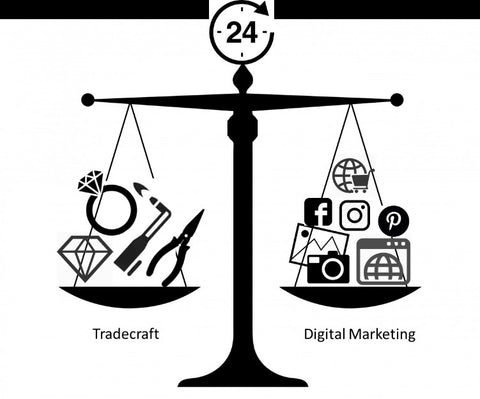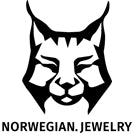Building vs. Marketing a Website
Posted on August 13 2018

Part I: It's One Thing to Build a Website but Quite Another to Market It!
Overview: In this three-part series, we outline the process to set up, maintain, and market an online presence. Then we propose our concept: digital marketing as a service, known as the "No-Website" solution.
It is one thing to build a website but quite another to market it: Going online is not a single event. Instead, after website and online store completion, the merchant must continuously promote their online presence. Just like a traditional brick and mortar shop, the goal is to build a loyal and enthusiastic following, offering repeat business and word of mouth referrals. The costs associated with going online are more than just financial, requiring a time investment as well.

Balancing Tradecraft vs. Marketing
Like with other specialty retail sectors, artisan jewelers are having to become digital experts, diverting time from their trade to market online. Already busy, they must deal with graphic design, website builders, e-commerce platforms, and social media. On top of that, they must keep abreast of changes, making sure that they have optimal exposure. Even when "out there", on the information highway, it takes a consistent effort and nurturing to standout. Even for the most established boutiques, it remains challenging to gain the confidence of new customers, especially those in far-off lands.
What's Required for a Digital Presence?
Touched upon earlier, a small business owner must develop expertise across many disciplines or hire an agency, adding cost.
Graphics & Texts: Content is at the core of marketing no matter the approach: traditional or online. It conveys the who, what, where, when, how and why of the business to the consumer. Communication is achieved through text, photos, and branding. Before going online, these elements must be in place.
After completing a jewelry piece, the designer takes pictures and writes a detailed description. Even better, they tell the story behind the piece, making a connection with the consumer. Today's shoppers want something special in a world filled with mass-produced items.
Photography requires a personal investment in cameras, equipment and time or hiring a professional. Copytext requires substantial investment in time whether doing it yourself or hiring a professional, communicating and clarifying the details. Print and online marketing require branding and company graphics. It is usually done from the outset of business establishment. The agency supplies the jeweler with graphics files (AI, PSD, JPG, PNG, etc.).

Website: Using the above-mentioned elements and a dedicated domain name, the jeweler or designated professional can build a basic website and online store (discussed in the next section) using a wide variety of free or paid solutions:
- Landing Page: The homepage offering an overview of the business, special information, and the latest information.
- About (biography and detailed business information)
- Products
- Blog/News
- Contact (form or information in the footer)
- Social Media Links
- Facebook,
- Instagram,
- Pinterest,
- YouTube.
In addition to the basic framework above, the designer may add various back-end tools like:
- Google Analytics,
- Mail Chimp,
- Social Sharing Buttons
- SEO (search engine optimization) tools to enhance placements,
- Legal compliance modules (cookies, GDPR, etc.),
- Translation.
Online Store: Like the website, there are many tools that allow business owners to build an online store without technical skills. However, it also requires substantial time, attention to detail, and perseverance. Many defer this work to digital professionals. However, that also requires strong management and communication skills. The basic elements of an online store are:
- Detailed product descriptions,
- Product classification schema,
- Payment methods (PayPal, Stripe, Bitcoin etc.),
- Shipping Matrix (Input shipping weight, destination, and costs),
- Taxation (set VAT and other taxes based on destination),
- Policies (Return, Privacy, Terms of Service etc.),
- Customer Service
Social Media: Increasingly, consumers connect with brands and purchase products through social media. That presence is just as important as the website itself. Easy to set up, they require an ongoing time investment to build a loyal and profitable following. Each channel has specific graphic formats, which can be derived from the original branding. It is standard practice to link websites and online stores to the social channels:
- Facebook Page for Business,
- Instagram for Business,
- Pinterest Business Page,
- YouTube,
- LinkedIn,
- Twitter.
We suggest setting up a presence on three to four channels, making the maintenance manageable. Note that Facebook, Instagram, and Pinterest offer shoppable images.
In Part II, we discuss how an online business gets discovered.

